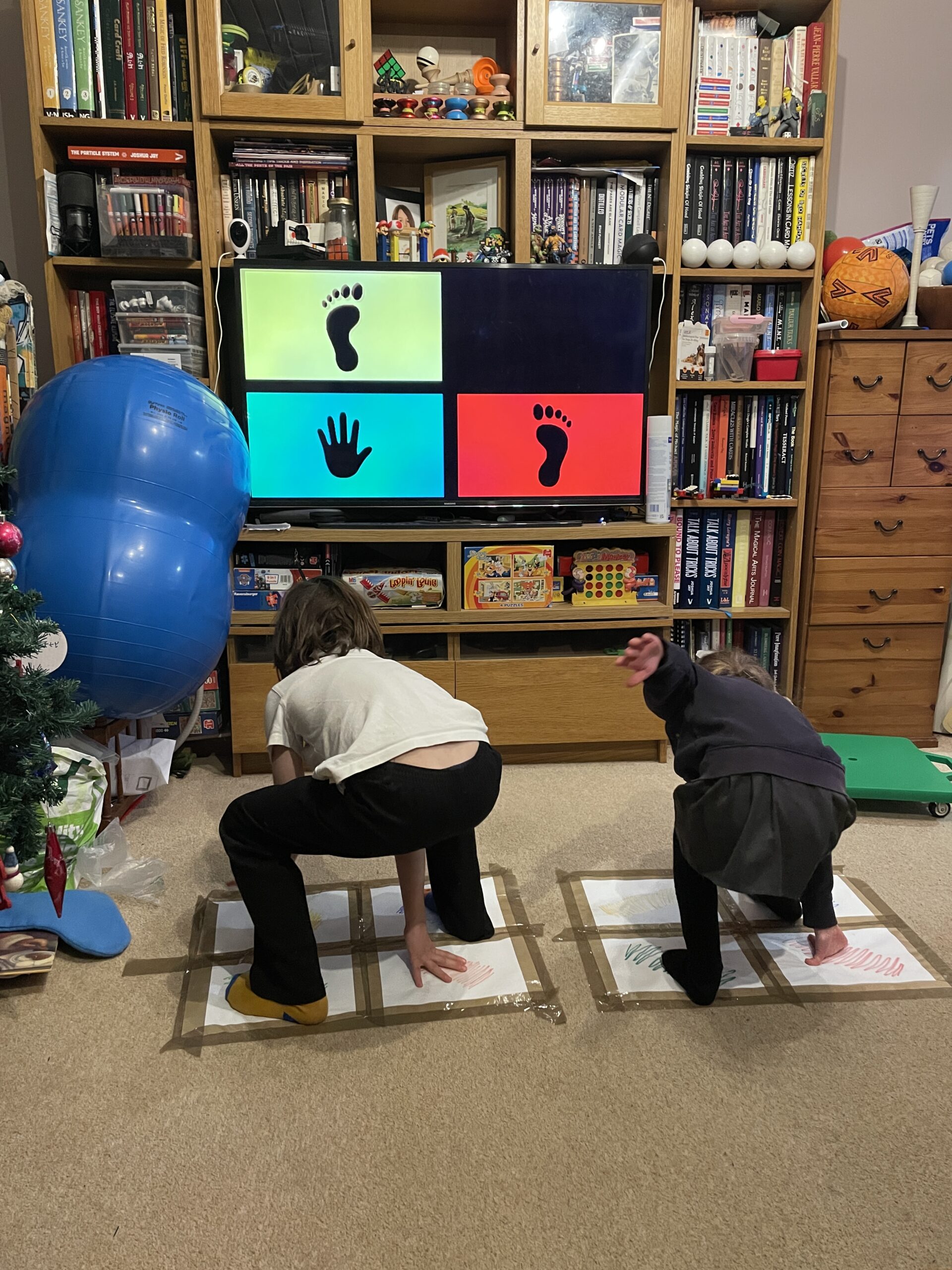
Screen Time and Kids: Why It Calms Some but Triggers Others
1. Introduction Screen time is one of the biggest parenting debates. It always seems to blow up the comments section,
Chewing is a totally natural and normal behaviour for children, especially during their early years. We all know babies and young toddlers put everything in their mouths, from toys and shoes to cat food, sand and even snails….I always found the eating of sand in particular grossed me out!!
Although it is a natural behaviour we expect to see in very young kids and is a part of exploring the world around them, for many children, especially those with additional needs, chewing can continue well into the older years. Some children develop excessive chewing habits which are causing damage to clothes, objects or have developed into self-injurious behaviour such as biting their hands. In this blog post, we will explore 10 top tips to help parents dealing with excessive chewing.
1. Understanding the Root Cause:

First off, it’s essential to understand why your child is chewing excessively. It could be due to teething, anxiety, concentration, sensory processing issues, self-regulation, or even boredom. For some children, the cause will vary depending on the situation.
Figuring out what chewing achieves for your kiddo is an essential first step in finding the right strategies.
Take a look at my video ‘Why do people chew?‘ for some ideas!
2. Providing Safe Chew Toys:
Invest in safe, high quality chew necklaces for your child. Chewable necklaces are a fantastic tool for redirecting your child’s chewing behaviour away from inappropriate objects, like lego, clothing and ipads! It’s also helpful to ensure their safety and help prevent damage to teeth and gums as well as reduce the likelihood of ingesting something dangerous.
Chew necklaces can also help prevent damage to expensive school clothing and other objects. I’ve heard of so many children going through expensive logo school jumpers at a speedy rate!
Here at Oojamabobs we offer a wide range of chew necklaces in different shapes, sizes, colours and textures.
If you’re new to chewy jewellery and don’t know where to start, check out our Bundle Packs! These contain several chewable necklaces in different shapes, one firm, one medium firm and one soft, with 2 different lanyard lengths. All at a reduced price! This is a great way to find what type of necklace suits your child, at an affordable price.
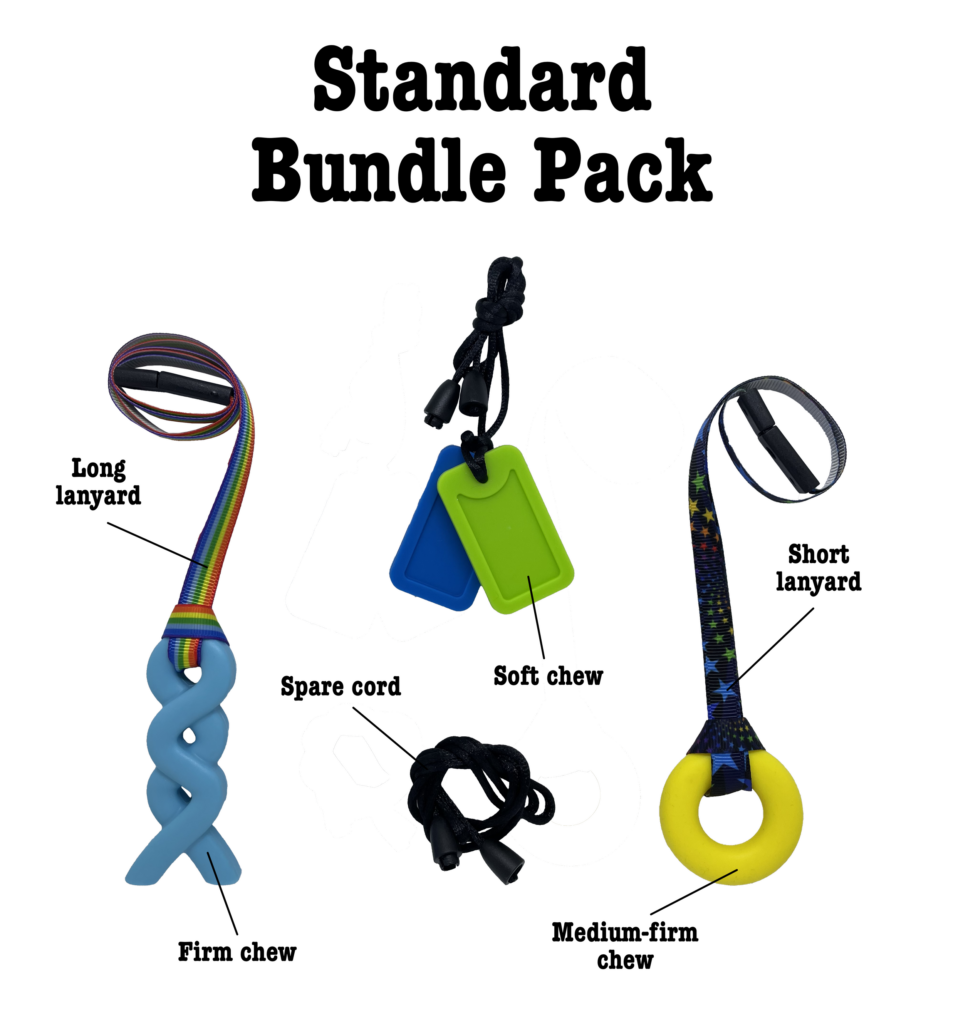
3. Offer Chewable Foods:
Chewing provides excellent proprioceptive feedback (check out this blog by Neurodivergent Insights to read more about proprioception and how it helps us regulate our emotions). Certain foods provide much more resistance than others, meaning the jaw has to work harder to break them down. This intense, strong pressure in the jaw provides deep stimulation of the proprioceptive system, which has a hugely calming impact on the chewer. This is one of the many reasons our kids may have a strong need to chew; it helps them to feel calm!
Offering really crunchy and chewy foods is a fabulous way to help provide your kids with a way to safely meet this need.
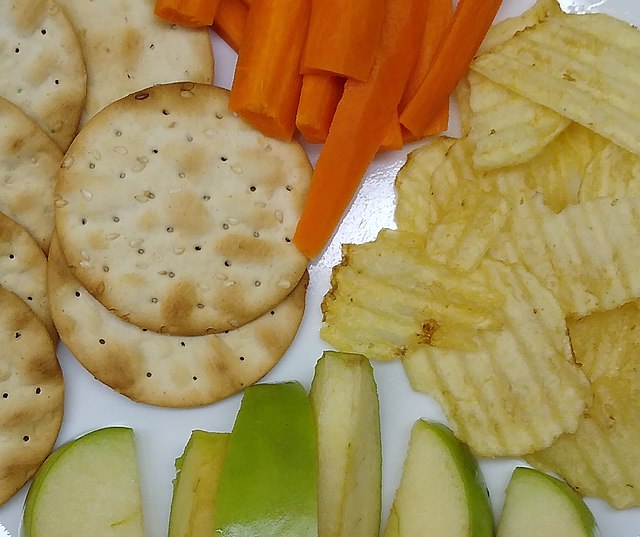
Here are some great options you can try:
4. Use Chewing Tools at the right times:
Have your chews at the ready! Make sure you have your chewy tools with you for any high stress/anxiety situations. Whether these are chew toys or crunchy foods, if you’re on your way to a busy/noisy/stressful environment, going armed with some practical items to whip out as needed will help you all to feel calmer.
As soon as your child shows signs of becoming anxious/stressed, provide them with their chew/crunchy food/fiddly toy and briefly explain why you are giving it to them. “You’re feeling stressed, here’s your chew, it will help you feel calmer.”
If your kids are chewing their clothing even though they’re wearing a chew, a gentle redirect to the chew and praise when they then use it is a great start.
Introducing these tools at these key moments will help your child to associate the chew/item with feeling calmer and more regulated. In time, they will hopefully seek out the tools independently (for example by starting to use the chew themselves without being asked) and learn to better self-regulate!
Praise can really help with this, so if your kiddo starts using a new chew by themselves in a stressful situation, be sure to recognise this and tell them how great they’re doing.
5. Sensory Activities at home:
Taking part in more sensory activities like playing with playdough, using textured brushes, or finger painting can really help our kids to feel calmer across the board.
General sensory activities can help them regulate their sensory input and as a result, the need to chew CAN diminish if they’re getting enough sensory input elsewhere.
For most kids, figuring out which type of sensory input your child is seeking is key here. Does your child need to swing and jump? Do they prefer to swirl, flap and flick things? Or are they more interested in exploring different textures?
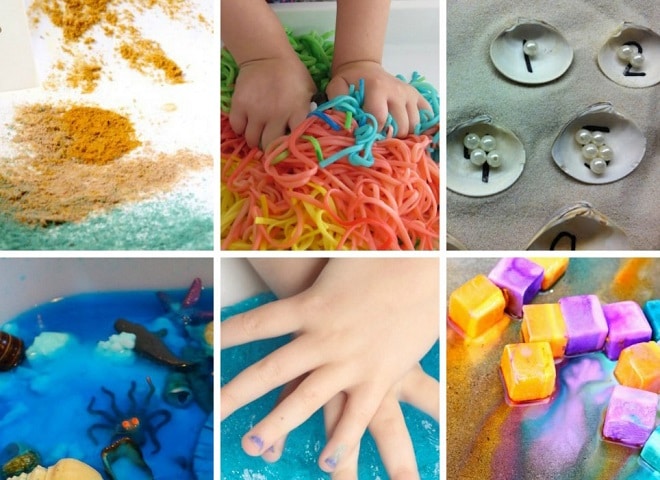
My eldest needs to MOVE. Jumping, climbing and swinging, bouncing etc go a long way towards him feeling calmer. My youngest is more into textures and gets a lot out of things like play dough or finger painting.
6. Positive Reinforcement:
Don’t forget to praise your kids for self-regulating! “You were feeling really cross, so you got out your chew and did some chomping. Now you feel calmer. Good work!”
Recognising they have a need and seeking out an appropriate calming strategy is bloody brilliant and needs recognition.
It can take time for a chewing habit to be transferred from (for example) chewing a school jumper to chewing a sensory necklace. Gentle redirection to the designated chewy item and positive reinforcement for using the item really can make a big difference. Be patient but consistent and understand for many kids, they were happy chewing on their clothes and it can take some time to change a habit like this.
7. Seek Professional Help if Needed:
If for your kid, excessive chewing/chewing inappropriate items/biting persists despite your best efforts at following the above (and significantly impacts yours or your child’s daily life), do consider consulting a healthcare professional or an occupational therapist.
The right professional will assess your child’s specific needs and provide tailored strategies to manage the specific behaviour effectively, such as devising a ‘sensory diet’ plan for your child, with sensory activities specially designed to meet their individual sensory needs.
I know it can be really hard to get the right support, but it’s well worth trying to get a referral to an Occupational Therapist and getting a tailor-made sensory plan. With all the right things in place, it can be life-changing if sensory needs can be well managed.
8. Teach Relaxation Techniques:
If your child is on board, teaching your child relaxation techniques such as deep breathing or simple yoga exercises is a great way to help them self-regulate when they’re feeling anxious or stressed.
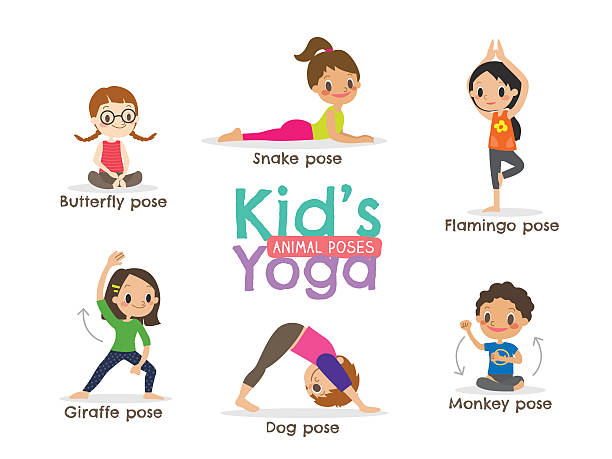
These techniques can help them manage anxiety and reduce the urge to chew as a coping mechanism. For some children this can be as simple as holding them or sitting close by and demonstrating deep, slow breaths for them to copy. This can be an ideal method for children who may be non-verbal, are at a different developmental level compared to peers or who are not receptive to being directly taught relaxation techniques.
Many schools are teaching mindfulness as part of the curriculum these days. My 6 year old recently talked to me about five finger breathing and suggested I use it to help stay calmer (I was trying to get everyone out of the house and to school without losing it; this suggests I wasn’t appearing as calm as I thought!).
There are so many fantastic free tools for helping children practice mindfulness, check out these free resources.
9. Establish Consistent Routines:
Children (and adults!) often find comfort in routines and predictability. It can be useful for some families to put in place a consistent daily routine which includes sensory activities and breaks. For kids with anxiety-related chewing, the sensory activities may help them to regulate more generally and reduce their need to chew.
Many people find a visual routine especially helpful for their children, I’ve just implemented one in my home for my 4 and 6 year olds!
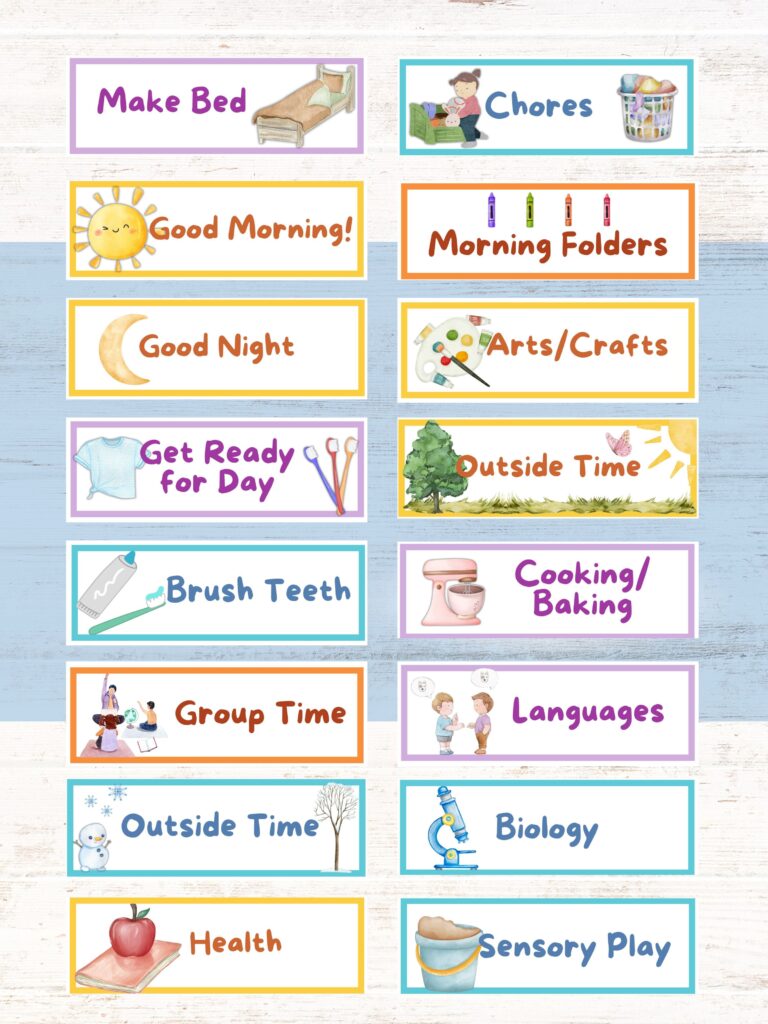
10. Be Patient and Supportive:
Lastly, try to be patient and supportive in reducing excessive chewing in your kids. As frustrating as it can be to deal with, our kids aren’t doing this to wind us up, they’re actually trying hard to meet their own needs, with whatever is close at hand. If you think about it, that’s really hugely positive!

1. Introduction Screen time is one of the biggest parenting debates. It always seems to blow up the comments section,
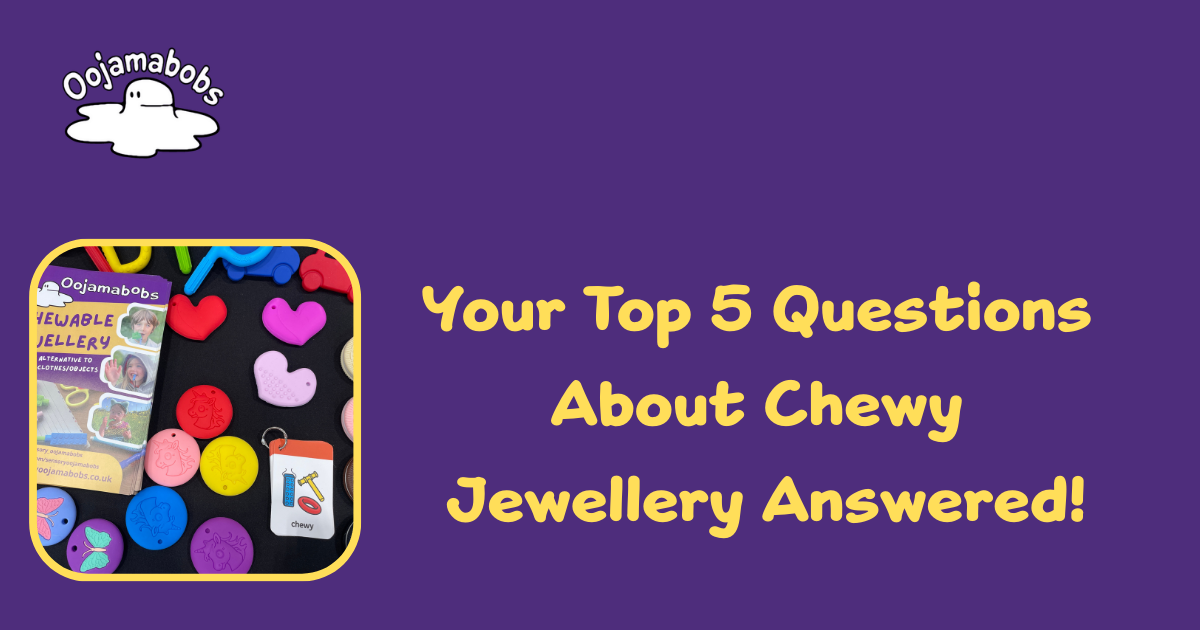
A blog post answering the top 5 questions about chewy jewellery

How can I be a calmer parent? You may or may not know how I got into Oojamabobs. The short